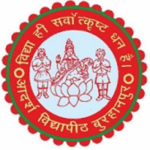Class 10 Social Science (Popular Struggles and Movements)
- Course level: Intermediate
-
Share:
- Categories Class 10
- Total Enrolled 0
- Last Update August 26, 2021
Description
Popular Struggles and Movements
In this chapter, we will carry this discussion further and see how those who exercise power are constrained by the influence and pressure exerted on them. We begin with this chapter with a discussion of how struggles around conflicting demands and pressure shape democracy. In this chapter, we look at the indirect ways of influencing politics, through pressure groups and movements. This leads us to the next chapter to direct ways of controlling political power in the form of political parties.
Popular struggles in Nepal and Bolivia
Movements for democracy in Nepal
1. Nepal witnessed an extraordinary popular movement in April 2006. The movement was aimed at restoring democracy.
2. The movement of April 2006 was aimed at retaining popular control over the government from the king.
3. All the major political parties in the parliament formed a Seven Party Alliance (SPA) and called for four-day strike in Kathmandu, the country’s capital.
4. The number of protesters reached between three to five lakhs on 21 April and they served an ultimatum to the king.
5. The leader of the movement rejected he half-hearted concessions made by the king.
6. They stuck to their demand for restoration of parliament, the power to an all party government and a new constituent assembly.
7. On 24 April 2004, the last day of the ultimatum, the king was forced to concede all the three demands.
8. The SPA chose Girija Prasad Koirala as the new Prime Minister of the interim government.
9. This struggle came to be known as Nepal’s second movement for democracy.
Topics for this course
Popular Struggles and Movements
Important Terms And Concepts
Question Answers
Question 1
Question 2
Question 3
Question 4
Question 5
Test 1
Popular Struggles and Movements
Test 2
Popular Struggles and Movements
Test 3
Popular Struggles and Movements
About the instructor
130 Courses
58 students


